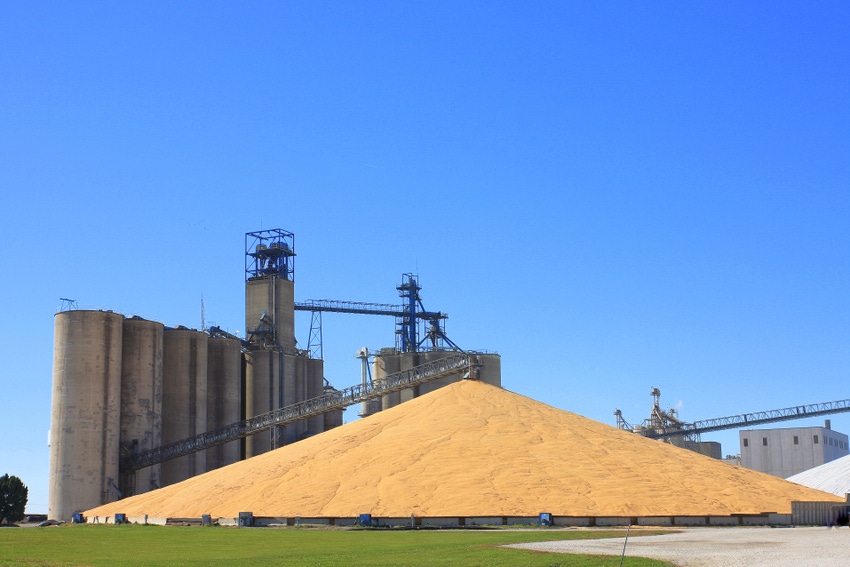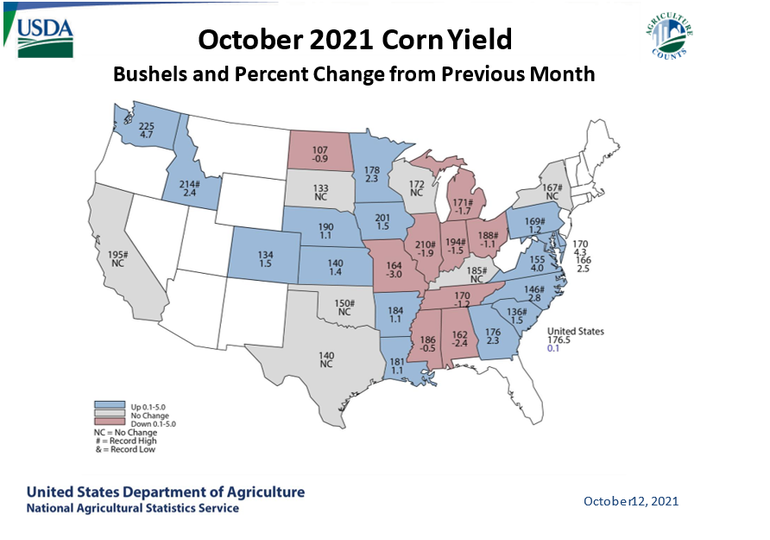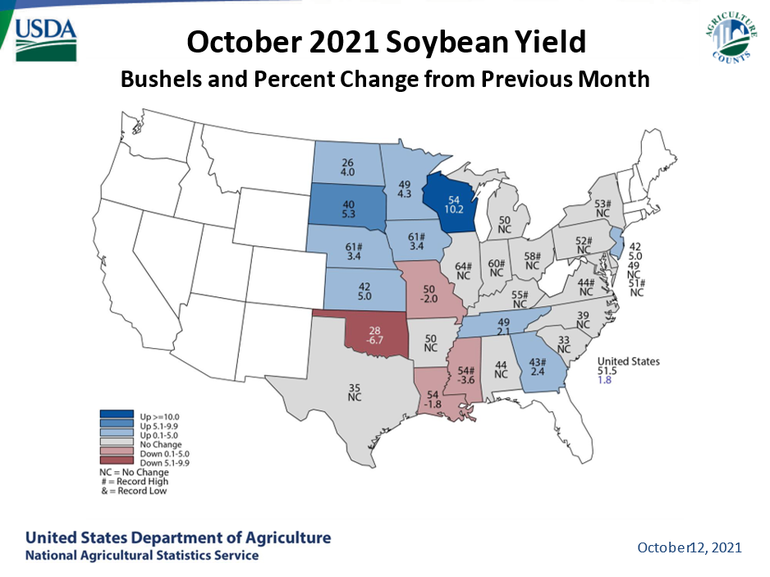One less thing to worry about
U.S. will produce a record crop of beans and the second highest corn production in history.
October 18, 2021

The USDA gave animal agriculture a nice little gift last week in the form of a crop production estimate that provides a sigh of relief for anyone purchasing feed inputs. Corn and soybean prices came under pressure, but this was not the same story for wheat as that will price itself as a food-grade item for the foreseeable future.
Corn yield was adjusted higher with most of the uptick coming on the western side of the Mississippi River. Record yields are still evident on the eastern side. The promise of huge production in the East was tempered a bit by late-season dryness. However, we will still see records in several states (Ill., Ind., Ohio, Wisc.). The West is where the real surprises have emerged, despite generally dry conditions throughout the growing season.

The soy situation was similar and even a bit more dramatic with record yields in contiguous states from Nebraska to Pennsylvania. I had shared previously that Q4 of 2021 will mark the beginning of a new era for soybeans, one similar to what corn experienced in the ethanol boom. It will be characterized by a shift in Renewable Diesel (RD is how it is referenced in the soy trade community) that may permanently change the relationship between soybean oil and soybean meal. Unlike ethanol that was an unequivocable pain in the side for livestock, RD looks to have a different unintended consequence – cheap soybean meal. We are in the early stages of this transition, and you will see more in the news as time rolls on.
There was announcement of another new plant last week in the form of Bartlett building a soybean processing facility in Kansas. This is seventh announcement this year of plans to build or expand crush capacity. It sure feels like 2005 all over again with government policy and subsidies dictating changes to our landscape. Back then it was ethanol, now it is renewable diesel.
What does this mean to us? The first and easiest call is a wide soybean meal basis once we are in the throes of the production increases. It has not happened yet as we are still back-filling demand from the previous crop year, and nearby basis numbers – while decently attractive – are nowhere near as wide as I believe they will trade in the future. It’s the same story with spreads as they should weaken with time.
Corn basis is another story as the supply/demand picture is more in balance. To be sure, we crossed the psychologically important threshold on bean carryout and are projected to have more than 300 million bushels as a buffer at the end of this crop year, corn is projected at the 1.5-billion-bushel mark, which is enough but not too much. Basis in corn will likely be in the category of “normal” to a bit snug at times, while soybean meal basis should widen predictably as we roll forward from here.

The bottom line of this situation: after experiencing growing conditions that were not great for much of the season, the U.S. will produce a record crop of beans and the second highest corn production in history. This is good news for pork producers, and one less thing for them to worry about.
On the revenue front, we are still plagued by the inability to harvest and convert hogs due to labor difficulties. This scenario (tight labor) is not unique to us or our industry and is not likely to change anytime soon. We will learn to adapt and adjust our expectations, but now is probably not the time for a pork producer absent a shackle space agreement with a strong cutout component to consider expansion.
The September “Hogs and Pigs” report gave us no reason to believe that we are going to be overrun with hogs; we simply need to fulfill the opportunity to efficiently operate plants and get product to consumers. By nearly every measure, demand – as measured by disappearance at a price—is good across the spectrum for all pork products. Manifesting this into stronger hog prices has experienced some slippage because of the labor situation. This has big implications for those marketing their hogs in the spot market as well as for those that rely on the Iowa/So Minnesota or Western Corn Belt for price discovery. The packer has limited desire to bid for animals as his committed supply is sufficient to run the plant at current capacity. They have a sated appetite, and maybe even more committed hogs than they are comfortable scheduling. This makes it very tough to squeeze a pig without a commitment. We continue to advocate for producers to 1) endeavor to have cutout pricing in any agreement and 2) utilize the government-subsidized insurance program as a key component for their risk management needs. The first item may be difficult and the second is at your avail.
Sources: Joseph Kerns, Partners for Production Agriculture, who are solely responsible for the information provided, and wholly own the information. Informa Business Media and all its subsidiaries are not responsible for any of the content contained in this information asset.
About the Author(s)
You May Also Like





